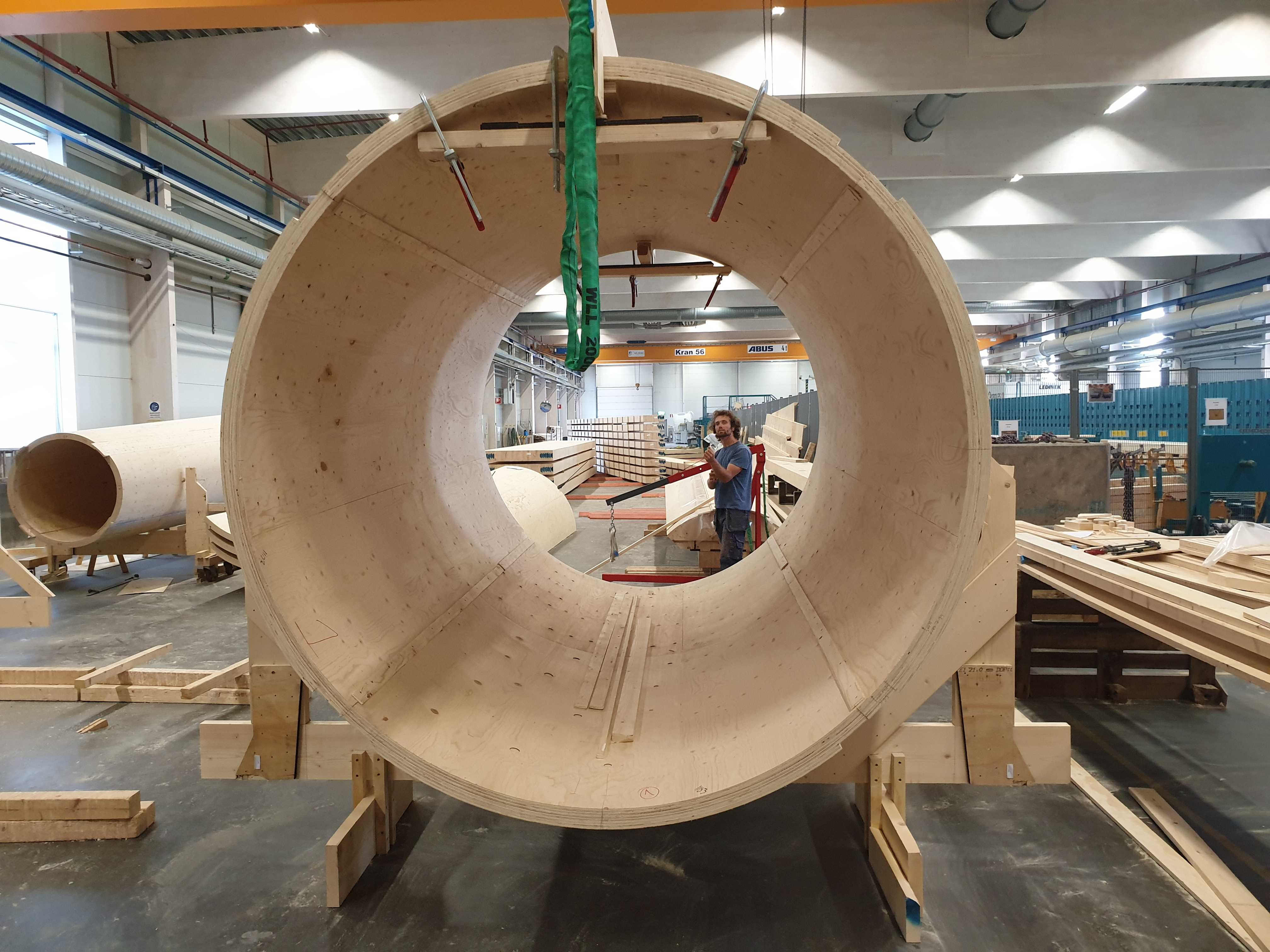Vestas announced Thursday that it had invested in a Swedish firm which develops and manufactures wind turbine towers.
The Danish turbine maker said it had become a minority investor in Modvion, which uses laminated veneer lumber, or LVL, to make turbine towers that are modular and put together on-site.
“When compared directly with the value chain of a conventional steel tower, Modvion towers are expected to reduce carbon emissions by 80 percent for the wind turbine tower,” Vestas said in a statement.
In a separate announcement, Modvion explained the idea behind the deal was to “accelerate market adoption and scale-up the production of wooden wind turbine towers.”
In April, Modvion installed a 30-meter tower on an island near the Swedish city of Gothenburg, and the company plans to build its first commercial tower in 2022.
“The reduced weight of Modvion’s towers, in combination with their ability to align with Vestas’ modular product architecture, could allow for increased ease of transportation in logistically challenged markets,” Bo Svoldgaard, Vestas’ head of innovation and concepts, said in a statement.
“Furthermore, the tower design could allow for Vestas to increase turbine hub heights, contributing to a reduction in cost of energy,” Svoldgaard added. “Overall, there is potential to become less reliant on steel prices, which would support Vestas’ ongoing growth journey.”
As technology develops, the size of wind turbines is increasing. Siemens Gamesa Renewable Energy is working on a 14 megawatt turbine which can also be boosted to 15 MW if required, while GE Renewable Energy’s Haliade-X can be configured to 12, 13 or 14 MW.
Just last week, Vestas announced plans for a 15 MW offshore wind turbine. In simple terms, the taller a turbine, the more energy it can produce, which can in turn reduce costs.
Vestas’ investment in Modvion was finalized at the end of January and is the first official deal involving Vestas Ventures, its corporate venture capital arm.
The Aarhus-headquartered company’s move comes as it pushes ahead with plans to produce “zero-waste” wind turbines by the year 2040.
The past and the future
While it has been used in buildings and structures for thousands of years, timber could also have a role to play in the future, and has been deployed in a number of interesting recent projects.
These include the 85.4 meter (a little over 280 feet) tall Mjøstårnet building in Norway, which used a combination of glue-laminated timber, known as glulam, and cross-laminated timber.
Last year, Australian tech firm Atlassian unveiled plans to construct what it described as “the world’s tallest hybrid timber building.”
Standing around 40 stories tall, the design of the building was developed by SHoP, an architecture firm in New York, and Australia’s BVN.
It will incorporate timber and a façade of glass and steel that will also use solar panels and have “self-shade capabilities.” Plans are also in place for a staggered outdoor garden to be integrated into the structure.
